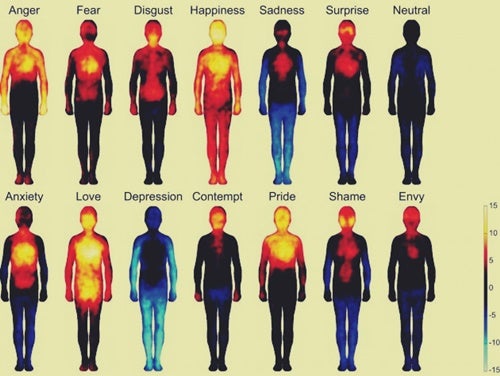Somatic Therapy: Releasing Trapped Emotions


Written and verified by the psychologist Valeria Sabater
Somatic therapy can help bring harmony to your body, mind, and emotions. This holistic approach uses a variety of therapeutic strategies to help patients heal from trauma. The goal is to help you become aware of different somatic experiences that are associated with traumatic events or trapped emotions.
Although no one fully understands it yet, there’s a special connection between the body, your emotions, and even cognitive performance. One of the most prominent figures that studied this connection was Antonio Damasio, with his well-known somatic marker hypothesis.
This term describes how emotions create somesthetic (or somatic) senses, a kind of physiological pattern that’s able to mediate decision-making and reasoning. This is an exciting subject that has integrated the somatic therapy approach into its foundation.
“Feelings are more dangerous than ideas, because they aren’t susceptible to rational evaluation. They grow quietly, spreading underground, and erupt suddenly, all over the place.”
-Brian Eno-

Goals of somatic therapy
Somatic therapy is a psychobiological approach to treating trauma. One of the premises of this kind of therapy is that it’s nearly impossible to fully heal someone unless you treat the body and mind as a single unit.
Professor Stanley Keleman developed this technique in 1971 with the goal of healing physical, emotional, and psychological obstructions caused by conflicts and unresolved experiences.
Likewise, somatic therapy is useful for treating anxiety, stress, depression, and addiction. It can even help people with chronic pain improve their quality of life. Although this all sounds great, does this therapy live up to the hype? Fortunately, there’s a lot of scientific research on somatic therapy to answer that question.
Studies from the Hebrew University of Jerusalem and the Los Angeles Trauma Resource Institute show that somatic therapy is effective for treating post-traumatic stress disorder (PTSD). Therapists have seen progress in patients who suffered abuse in childhood and even people who had survived natural disasters.

Goals of somatic therapy
This psychobiological approach combines body awareness with the psycho-therapeutic process.
- The basic premise is that all traumas, complex events, problems, or worries have an impact on your autonomous nervous system.
- Instead of breaking down over time, these complex emotions become embedded in your body. They manifest as digestive problems, hormonal imbalances, immune system issues, muscular pain, headaches, and allergies.
- The goal of therapy is to achieve homeostasis. In other words, to restore the mind-body balance and reach a pain-free state where nothing gets in your way of truly living in the present.
- During the sessions, the therapist provides tools for the patient to learn how to detect and identify bodily sensations.
- Somatic therapy is different from cognitive therapy. Cognitive therapy deals with thoughts and explores how they affect emotions. Somatic therapy, however, goes from the body to the mind. Uncovering and understanding your internal sensations, visceral (interoception) as well as muscular-skeletal (proprioception and kinesthetic), allows your therapist to move on to your emotional reality.
As we mentioned above, recent scientific advances lend greater credibility to somatic therapy. One of the most revealing is the one Dr. Lauri Nummenmaa, a professor at Aalto University in Finland, conducted.
Her study, published in Proceedings of the National Academy of Sciences of the United States of America (PNAS), shows the first bodily map of human emotions. Feelings such as anger, fear, disappointment, hope, surprise, and jealousy trigger greater physiological responses in specific body parts.
How to release and understand your trapped emotions
Dr. Peter Levine, a biophysical physician and psychologist at the University of California, Berkeley is an expert on somatic experimentation therapy. His approach to facilitate emotional release is to first “unstick it” from your body. To do that, the first step is to help the patient be aware of the pathological imprint the emotions leave on the body.

The methods for bringing this awareness are:
- Relaxation and deep breathing exercises.
- Physical exercises such as dance, movement, and stretching.
- Voice exercises.
Each patient will determine which method is the most effective for their situation. The end goal is to raise awareness of somatic experiences. Each sensation should trigger images and emotions that help the therapist understand what’s happening.
Lastly, it’s important to mention that, in spite of new research, this technique certainly has its critics. One of the main criticisms is that many people try this approach without first getting a clear diagnosis. Before trying somatic therapy, you need to rule out other physical conditions, illnesses, and hormonal issues, such as thyroid dysfunction.
Although somatic therapy is interesting and useful, it still doesn’t have the same success rates as cognitive-behavioral therapy, for example. Nevertheless, that doesn’t mean that it isn’t a viable therapeutic option.
This text is provided for informational purposes only and does not replace consultation with a professional. If in doubt, consult your specialist.








